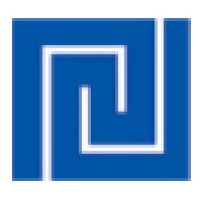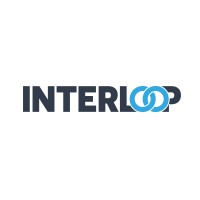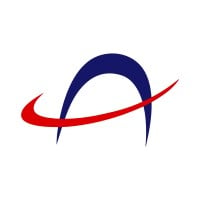
SANGAM INDIA LTD, BHILWARA Company Cyber Security Posture
sangamgroup.comBorn of humble beginnings in the year 1984, the group today is a business giant with over 12,000 employees. The Group has more than 280,000 spindles and 3000 rotors for producing PV dyed yarn, cotton and OE yarn with an enviable reputation for quality, which is underlined by its ISO 9001:2008 certification. The Group is the largest producer of PV dyed yarn in Asia at a single location and is a forerunner in manufacturing ready to stitch fabric with the annual capacity to produce 30 million meters of fabric and 48 million meters of denim. Charting a steady growth path, Sangam Group has diversified into infrastructure, power, steel and recently the seamless garment industry. The Group has introduced a seamless garment manufacturing facility with 54 seamless knitting machines with the capacity to produce 5 million pieces per annum. Apart from the activities which Sangam has carried out to be where it currently is, the company firmly believes that its contribution to society plays an important role in its growth too. The group is supporting a charitable trust which operates a 100-bed hospital for the needy people, a university having world-class infrastructure, and an IB World School in Bhilwara, Rajasthan.
SILB Company Details
sangam-india-ltd-bhilwara
10,001+ employees
17815
313
Textile Manufacturing
sangamgroup.com
Scan still pending
SAN_3140763
In-progress
Between 900 and 1000
This score is AI-generated and less favored by cyber insurers, who prefer the TPRM score.
 SILB Global Score
SILB Global Score.png)

SANGAM INDIA LTD, BHILWARA Company Scoring based on AI Models
| Model Name | Date | Description | Current Score Difference | Score |
|---|---|---|---|---|
| AVERAGE-Industry | 03-12-2025 | This score represents the average cybersecurity rating of companies already scanned within the same industry. It provides a benchmark to compare an individual company's security posture against its industry peers. | N/A | Between 900 and 1000 |
SANGAM INDIA LTD, BHILWARA Company Cyber Security News & History
| Entity | Type | Severity | Impact | Seen | Url ID | Details | View |
|---|
SANGAM INDIA LTD, BHILWARA Company Subsidiaries

Born of humble beginnings in the year 1984, the group today is a business giant with over 12,000 employees. The Group has more than 280,000 spindles and 3000 rotors for producing PV dyed yarn, cotton and OE yarn with an enviable reputation for quality, which is underlined by its ISO 9001:2008 certification. The Group is the largest producer of PV dyed yarn in Asia at a single location and is a forerunner in manufacturing ready to stitch fabric with the annual capacity to produce 30 million meters of fabric and 48 million meters of denim. Charting a steady growth path, Sangam Group has diversified into infrastructure, power, steel and recently the seamless garment industry. The Group has introduced a seamless garment manufacturing facility with 54 seamless knitting machines with the capacity to produce 5 million pieces per annum. Apart from the activities which Sangam has carried out to be where it currently is, the company firmly believes that its contribution to society plays an important role in its growth too. The group is supporting a charitable trust which operates a 100-bed hospital for the needy people, a university having world-class infrastructure, and an IB World School in Bhilwara, Rajasthan.
Access Data Using Our API

Get company history
.png)
SILB Cyber Security News
Sangam Company Profile Funding & Investors
Sangam Group is one of the leading textile producers in India with diversification into steel, power and infrastructure.
Starting with 8 weaving machines to becoming a Rs 1,300 Cr turnover textile company: The story of Sangam India
NSE-listed textile company Sangam India was founded in 1984. Starting with eight weaving machines, the company now boasts over two lakh spindles ...

SILB Similar Companies

Nahar Industrial Enterprises Limited
NAHAR Industrial Enterprises Ltd. (OWM Group) is reckoned as a prominent industrial house of Northern India, incessantly growing and diversifying along with its stakeholders, while engaging itself in the well-being of both the environment and society. Furthermore, established in the ’90s, the org

Hop Lun
Hop Lun is a leading international fashion lingerie and swimwear company headquartered in Hong Kong. Since 1992, we have been steadfast in our commitment to delivering top-quality fashion lingerie and swimwear to major retailers worldwide. With a dedicated workforce of over 28,000 employees, we ope

Silver Composite Textile Mills Ltd
SilverLine Group had started initially with Knit Yarn manufacturing in the form of a Spinning Mill named Silverline Composite Textile Mills Ltd. with 38700 spindles and producing 22 tons /day of hosiery yarns since 2004 with varying counts viz. 20/1,24/1,26/1.28/1,30/1, 32/1,34/1,40/1Ne with latest

Interloop Limited
Interloop is a vertically integrated, Full Family Clothing manufacturer of Hosiery, Denim, Apparel & Seamless Activewear for world leading brands and retailers. We are the largest listed apparel company on Pakistan Stock Exchange and one of the world’s largest hosiery manufacturer, producing ov

Indorama Synthetics
Indorama is a global manufacturer of diversified industrial products such as Polyester, PET Resins, PTA, Polyethylene, Polypropylene, Spun Yarns, Fabrics, and Medical Gloves. Indorama has manufacturing facilities in ten countries over four continents. Indorama is the world’s largest manufacturer

Alok Industries Ltd
Alok Industries Limited founded in 1986, is a diversified and integrated manufacturer of Apparel Fabrics (Woven and Knits), Home Textiles (Bed & Bath), Cotton & Polyester Yarns and Garments. With headquarters in Mumbai, Alok Industries has well equipped and vast manufacturing facilities in Silvassa

Frequently Asked Questions (FAQ) on Cybersecurity Incidents
SILB CyberSecurity History Information
Total Incidents: According to Rankiteo, SILB has faced 0 incidents in the past.
Incident Types: As of the current reporting period, SILB has not encountered any cybersecurity incidents.
Total Financial Loss: The total financial loss from these incidents is estimated to be {total_financial_loss}.
Cybersecurity Posture: The company's overall cybersecurity posture is described as Born of humble beginnings in the year 1984, the group today is a business giant with over 12,000 employees. The Group has more than 280,000 spindles and 3000 rotors for producing PV dyed yarn, cotton and OE yarn with an enviable reputation for quality, which is underlined by its ISO 9001:2008 certification. The Group is the largest producer of PV dyed yarn in Asia at a single location and is a forerunner in manufacturing ready to stitch fabric with the annual capacity to produce 30 million meters of fabric and 48 million meters of denim. Charting a steady growth path, Sangam Group has diversified into infrastructure, power, steel and recently the seamless garment industry. The Group has introduced a seamless garment manufacturing facility with 54 seamless knitting machines with the capacity to produce 5 million pieces per annum. Apart from the activities which Sangam has carried out to be where it currently is, the company firmly believes that its contribution to society plays an important role in its growth too. The group is supporting a charitable trust which operates a 100-bed hospital for the needy people, a university having world-class infrastructure, and an IB World School in Bhilwara, Rajasthan..
Detection and Response: The company detects and responds to cybersecurity incidents through {description_of_detection_and_response_process}.
Incident Details
Incident 1: Ransomware Attack
Title: {Incident_Title}
Description: {Brief_description_of_the_incident}
Date Detected: {Detection_Date}
Date Publicly Disclosed: {Disclosure_Date}
Date Resolved: {Resolution_Date}
Type: {Type_of_Attack}
Attack Vector: {Attack_Vector}
Vulnerability Exploited: {Vulnerability}
Threat Actor: {Threat_Actor}
Motivation: {Motivation}
Incident 2: Data Breach
Title: {Incident_Title}
Description: {Brief_description_of_the_incident}
Date Detected: {Detection_Date}
Date Publicly Disclosed: {Disclosure_Date}
Date Resolved: {Resolution_Date}
Type: {Type_of_Attack}
Attack Vector: {Attack_Vector}
Vulnerability Exploited: {Vulnerability}
Threat Actor: {Threat_Actor}
Motivation: {Motivation}
Common Attack Types: As of now, the company has not encountered any reported incidents involving common cyberattacks.
Identification of Attack Vectors: The company identifies the attack vectors used in incidents through {description_of_identification_process}.
Impact of the Incidents
Incident 1: Ransomware Attack
Financial Loss: {Financial_Loss}
Data Compromised: {Data_Compromised}
Systems Affected: {Systems_Affected}
Downtime: {Downtime}
Operational Impact: {Operational_Impact}
Conversion Rate Impact: {Conversion_Rate_Impact}
Revenue Loss: {Revenue_Loss}
Customer Complaints: {Customer_Complaints}
Brand Reputation Impact: {Brand_Reputation_Impact}
Legal Liabilities: {Legal_Liabilities}
Identity Theft Risk: {Identity_Theft_Risk}
Payment Information Risk: {Payment_Information_Risk}
Incident 2: Data Breach
Financial Loss: {Financial_Loss}
Data Compromised: {Data_Compromised}
Systems Affected: {Systems_Affected}
Downtime: {Downtime}
Operational Impact: {Operational_Impact}
Conversion Rate Impact: {Conversion_Rate_Impact}
Revenue Loss: {Revenue_Loss}
Customer Complaints: {Customer_Complaints}
Brand Reputation Impact: {Brand_Reputation_Impact}
Legal Liabilities: {Legal_Liabilities}
Identity Theft Risk: {Identity_Theft_Risk}
Payment Information Risk: {Payment_Information_Risk}
Average Financial Loss: The average financial loss per incident is {average_financial_loss}.
Commonly Compromised Data Types: The types of data most commonly compromised in incidents are {list_of_commonly_compromised_data_types}.
Incident 1: Ransomware Attack
Entity Name: {Entity_Name}
Entity Type: {Entity_Type}
Industry: {Industry}
Location: {Location}
Size: {Size}
Customers Affected: {Customers_Affected}
Incident 2: Data Breach
Entity Name: {Entity_Name}
Entity Type: {Entity_Type}
Industry: {Industry}
Location: {Location}
Size: {Size}
Customers Affected: {Customers_Affected}
Response to the Incidents
Incident 1: Ransomware Attack
Incident Response Plan Activated: {Yes/No}
Third Party Assistance: {Yes/No}
Law Enforcement Notified: {Yes/No}
Containment Measures: {Containment_Measures}
Remediation Measures: {Remediation_Measures}
Recovery Measures: {Recovery_Measures}
Communication Strategy: {Communication_Strategy}
Adaptive Behavioral WAF: {Adaptive_Behavioral_WAF}
On-Demand Scrubbing Services: {On_Demand_Scrubbing_Services}
Network Segmentation: {Network_Segmentation}
Enhanced Monitoring: {Enhanced_Monitoring}
Incident 2: Data Breach
Incident Response Plan Activated: {Yes/No}
Third Party Assistance: {Yes/No}
Law Enforcement Notified: {Yes/No}
Containment Measures: {Containment_Measures}
Remediation Measures: {Remediation_Measures}
Recovery Measures: {Recovery_Measures}
Communication Strategy: {Communication_Strategy}
Adaptive Behavioral WAF: {Adaptive_Behavioral_WAF}
On-Demand Scrubbing Services: {On_Demand_Scrubbing_Services}
Network Segmentation: {Network_Segmentation}
Enhanced Monitoring: {Enhanced_Monitoring}
Incident Response Plan: The company's incident response plan is described as {description_of_incident_response_plan}.
Third-Party Assistance: The company involves third-party assistance in incident response through {description_of_third_party_involvement}.
Data Breach Information
Incident 2: Data Breach
Type of Data Compromised: {Type_of_Data}
Number of Records Exposed: {Number_of_Records}
Sensitivity of Data: {Sensitivity_of_Data}
Data Exfiltration: {Yes/No}
Data Encryption: {Yes/No}
File Types Exposed: {File_Types}
Personally Identifiable Information: {Yes/No}
Prevention of Data Exfiltration: The company takes the following measures to prevent data exfiltration: {description_of_prevention_measures}.
Handling of PII Incidents: The company handles incidents involving personally identifiable information (PII) through {description_of_handling_process}.
Ransomware Information
Incident 1: Ransomware Attack
Ransom Demanded: {Ransom_Amount}
Ransom Paid: {Ransom_Paid}
Ransomware Strain: {Ransomware_Strain}
Data Encryption: {Yes/No}
Data Exfiltration: {Yes/No}
Ransom Payment Policy: The company's policy on paying ransoms in ransomware incidents is described as {description_of_ransom_payment_policy}.
Data Recovery from Ransomware: The company recovers data encrypted by ransomware through {description_of_data_recovery_process}.
Regulatory Compliance
Incident 1: Ransomware Attack
Regulations Violated: {Regulations_Violated}
Fines Imposed: {Fines_Imposed}
Legal Actions: {Legal_Actions}
Regulatory Notifications: {Regulatory_Notifications}
Incident 2: Data Breach
Regulations Violated: {Regulations_Violated}
Fines Imposed: {Fines_Imposed}
Legal Actions: {Legal_Actions}
Regulatory Notifications: {Regulatory_Notifications}
Regulatory Frameworks: The company complies with the following regulatory frameworks regarding cybersecurity: {list_of_regulatory_frameworks}.
Ensuring Regulatory Compliance: The company ensures compliance with regulatory requirements through {description_of_compliance_measures}.
Lessons Learned and Recommendations
Incident 1: Ransomware Attack
Lessons Learned: {Lessons_Learned}
Incident 2: Data Breach
Lessons Learned: {Lessons_Learned}
Incident 1: Ransomware Attack
Recommendations: {Recommendations}
Incident 2: Data Breach
Recommendations: {Recommendations}
Key Lessons Learned: The key lessons learned from past incidents are {list_of_key_lessons_learned}.
Implemented Recommendations: The company has implemented the following recommendations to improve cybersecurity: {list_of_implemented_recommendations}.
References
Additional Resources: Stakeholders can find additional resources on cybersecurity best practices at {list_of_additional_resources}.
Investigation Status
Incident 1: Ransomware Attack
Investigation Status: {Investigation_Status}
Incident 2: Data Breach
Investigation Status: {Investigation_Status}
Communication of Investigation Status: The company communicates the status of incident investigations to stakeholders through {description_of_communication_process}.
Stakeholder and Customer Advisories
Incident 1: Ransomware Attack
Stakeholder Advisories: {Stakeholder_Advisories}
Customer Advisories: {Customer_Advisories}
Incident 2: Data Breach
Stakeholder Advisories: {Stakeholder_Advisories}
Customer Advisories: {Customer_Advisories}
Advisories Provided: The company provides the following advisories to stakeholders and customers following an incident: {description_of_advisories_provided}.
Initial Access Broker
Incident 1: Ransomware Attack
Entry Point: {Entry_Point}
Reconnaissance Period: {Reconnaissance_Period}
Backdoors Established: {Backdoors_Established}
High Value Targets: {High_Value_Targets}
Data Sold on Dark Web: {Yes/No}
Incident 2: Data Breach
Entry Point: {Entry_Point}
Reconnaissance Period: {Reconnaissance_Period}
Backdoors Established: {Backdoors_Established}
High Value Targets: {High_Value_Targets}
Data Sold on Dark Web: {Yes/No}
Monitoring and Mitigation of Initial Access Brokers: The company monitors and mitigates the activities of initial access brokers through {description_of_monitoring_and_mitigation_measures}.
Post-Incident Analysis
Incident 1: Ransomware Attack
Root Causes: {Root_Causes}
Corrective Actions: {Corrective_Actions}
Incident 2: Data Breach
Root Causes: {Root_Causes}
Corrective Actions: {Corrective_Actions}
Post-Incident Analysis Process: The company's process for conducting post-incident analysis is described as {description_of_post_incident_analysis_process}.
Corrective Actions Taken: The company has taken the following corrective actions based on post-incident analysis: {list_of_corrective_actions_taken}.
Additional Questions
General Information
Ransom Payment History: The company has {paid/not_paid} ransoms in the past.
Last Ransom Demanded: The amount of the last ransom demanded was {last_ransom_amount}.
Last Attacking Group: The attacking group in the last incident was {last_attacking_group}.
Incident Details
Most Recent Incident Detected: The most recent incident detected was on {most_recent_incident_detected_date}.
Most Recent Incident Publicly Disclosed: The most recent incident publicly disclosed was on {most_recent_incident_publicly_disclosed_date}.
Most Recent Incident Resolved: The most recent incident resolved was on {most_recent_incident_resolved_date}.
Impact of the Incidents
Highest Financial Loss: The highest financial loss from an incident was {highest_financial_loss}.
Most Significant Data Compromised: The most significant data compromised in an incident was {most_significant_data_compromised}.
Most Significant System Affected: The most significant system affected in an incident was {most_significant_system_affected}.
Response to the Incidents
Third-Party Assistance in Most Recent Incident: The third-party assistance involved in the most recent incident was {third_party_assistance_in_most_recent_incident}.
Containment Measures in Most Recent Incident: The containment measures taken in the most recent incident were {containment_measures_in_most_recent_incident}.
Data Breach Information
Most Sensitive Data Compromised: The most sensitive data compromised in a breach was {most_sensitive_data_compromised}.
Number of Records Exposed: The number of records exposed in the most significant breach was {number_of_records_exposed}.
Ransomware Information
Highest Ransom Demanded: The highest ransom demanded in a ransomware incident was {highest_ransom_demanded}.
Highest Ransom Paid: The highest ransom paid in a ransomware incident was {highest_ransom_paid}.
Regulatory Compliance
Highest Fine Imposed: The highest fine imposed for a regulatory violation was {highest_fine_imposed}.
Most Significant Legal Action: The most significant legal action taken for a regulatory violation was {most_significant_legal_action}.
Lessons Learned and Recommendations
Most Significant Lesson Learned: The most significant lesson learned from past incidents was {most_significant_lesson_learned}.
Most Significant Recommendation Implemented: The most significant recommendation implemented to improve cybersecurity was {most_significant_recommendation_implemented}.
References
Most Recent Source: The most recent source of information about an incident is {most_recent_source}.
Most Recent URL for Additional Resources: The most recent URL for additional resources on cybersecurity best practices is {most_recent_url}.
Investigation Status
Current Status of Most Recent Investigation: The current status of the most recent investigation is {current_status_of_most_recent_investigation}.
Stakeholder and Customer Advisories
Most Recent Stakeholder Advisory: The most recent stakeholder advisory issued was {most_recent_stakeholder_advisory}.
Most Recent Customer Advisory: The most recent customer advisory issued was {most_recent_customer_advisory}.
Initial Access Broker
Most Recent Entry Point: The most recent entry point used by an initial access broker was {most_recent_entry_point}.
Most Recent Reconnaissance Period: The most recent reconnaissance period for an incident was {most_recent_reconnaissance_period}.
Post-Incident Analysis
Most Significant Root Cause: The most significant root cause identified in post-incident analysis was {most_significant_root_cause}.
Most Significant Corrective Action: The most significant corrective action taken based on post-incident analysis was {most_significant_corrective_action}.
What Do We Measure?
















Every week, Rankiteo analyzes billions of signals to give organizations a sharper, faster view of emerging risks. With deeper, more actionable intelligence at their fingertips, security teams can outpace threat actors, respond instantly to Zero-Day attacks, and dramatically shrink their risk exposure window.
These are some of the factors we use to calculate the overall score:
Identify exposed access points, detect misconfigured SSL certificates, and uncover vulnerabilities across the network infrastructure.
Gain visibility into the software components used within an organization to detect vulnerabilities, manage risk, and ensure supply chain security.
Monitor and manage all IT assets and their configurations to ensure accurate, real-time visibility across the company's technology environment.
Leverage real-time insights on active threats, malware campaigns, and emerging vulnerabilities to proactively defend against evolving cyberattacks.




